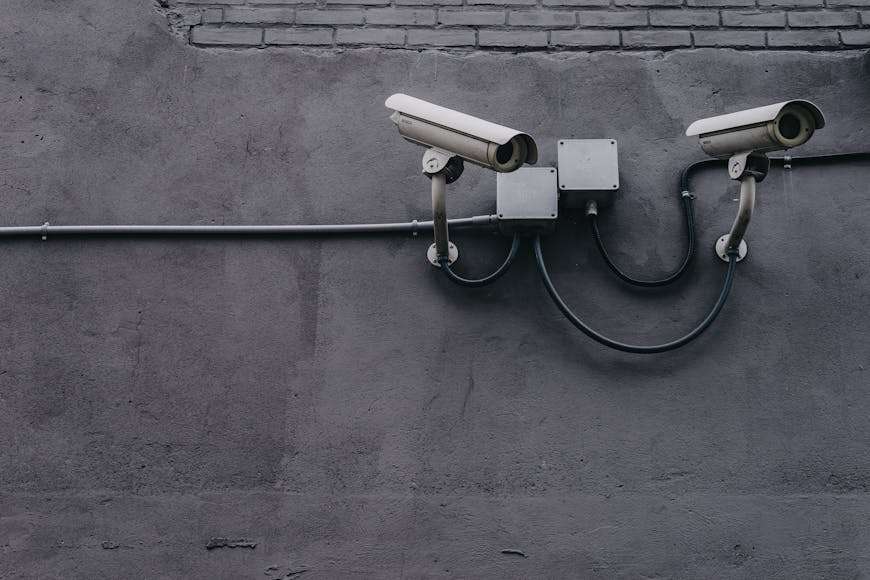Sep 30, 2024 admin
The Future of CCTV: AI-Powered Surveillance Systems
Introduction
There were days when a CCTV camera was a luxury. People used to install cameras for safety. But nowadays, surveillance has changed. Traditional CCTV systems are being replaced by AI-powered surveillance systems that have revolutionised the way we monitor and secure our environments. By integrating artificial intelligence (AI) and machine learning (ML), these systems offer advanced features, improved efficiency, and a higher level of security.
What are AI-Powered Surveillance Systems?
AI-powered surveillance systems combine AI and ML technologies with traditional CCTV setups. This integration enables the systems to perform advanced tasks such as:
- Facial Recognition: It identifies people by analyzing facial features. This provides improved security and personalized access control.
- Object Detection: It detects specific objects within the video feed like vehicles, weapons, or unattended bags. It is more to enhance the situational awareness.
- Motion Tracking: It helps in motion detection like following people or objects’ movement.
- Anomaly Detection: It identifies unusual activities or behaviours that could indicate potential security threats.
- Predictive Analytics: It uses historical data to predict future events and allows proactive measures to prevent incidents.
Benefits of AI-Powered Surveillance Systems
- Enhanced Security: AI-powered surveillance improves security and detects threats in real time. It provides instant alerts for swift action.
- Improved Accuracy: These systems reduce human error and false alarms. This is done through precise identification and analysis.
- Increased Efficiency: AI-driven systems can analyze large amounts of video data faster than human operators. The process helps to monitor properly.
- Real-Time Alerts: Instant alerts ensure that security personnel can respond immediately to potential incidents.
- Data-Driven Insights: AI systems generate valuable insights from collected data. This helps organizations to optimize security strategies and improve operational decisions.
Applications of AI-Powered Surveillance Systems
- Smart Cities: AI surveillance helps monitor traffic flow, detect accidents, and manage crowds. It makes urban environments safer and more efficient.
- Law Enforcement: Police use AI systems for suspect identification, crime pattern analysis, and rapid response. It enhances public safety.
- Retail and Commerce: Retailers utilize AI for loss prevention, customer behaviour analysis, and optimizing store layouts to improve sales.
- Healthcare: AI surveillance in hospitals improves patient safety, monitors unauthorized access, and helps manage facility security.
- Transportation: AI systems monitor transportation hubs for security threats, manage crowd control, and optimize passenger flow.
Key Features of AI-Powered Surveillance Systems
- Video Analytics: Advanced video analytics processes vast amounts of footage to identify patterns, detect anomalies, and generate actionable insights.
- AI-Driven Motion Detection: Motion detection powered by AI is more precise. It also reduces false positives and accurately identifies movement patterns.
- Facial Recognition Software: This technology helps identify known individuals and track them across various cameras.
- Object Classification: AI can differentiate between different types of objects, like cars, animals, and people. It enables targeted alerts and responses.
- Automated Alerts: Automated alerts notify security teams of potential threats. It enables immediate action without manual monitoring.
Challenges and Concerns
- Privacy Concerns: AI surveillance raises privacy issues. The constant monitoring and data collection can infringe on individual rights.
- Data Security: Safeguarding the vast amount of data collected by AI systems is important to prevent unauthorized access and cyberattacks.
- Bias and Accuracy: AI algorithms can be biased leading to incorrect identifications or discriminatory outcomes. This might have serious consequences.
- Integration with Existing Systems: Integrating AI technology into legacy systems is challenging. It requires significant upgrades and investment.
- Cost and Scalability: High initial costs and scalability issues can limit the widespread adoption of AI-powered surveillance.
Future Developments
- Edge AI: Processing data closer to the source (i.e., on the cameras) will reduce latency and improve response times.
- Cloud-Based AI: Leveraging cloud computing will enable more sophisticated analytics and storage capabilities. It will make surveillance more powerful.
- 5G Integration: 5G will provide faster data transmission and enhance real-time analysis and remote monitoring capabilities.
- Autonomous Surveillance: AI-powered drones and robots will offer autonomous surveillance. It will provide coverage in hard-to-reach or high-risk areas.
- Explainable AI (XAI): XAI will make AI decisions more transparent and help to address concerns about bias and accountability.
Conclusion
AI-powered surveillance systems are transforming the future of CCTV. With enhanced security, improved accuracy, and increased efficiency, these systems are poised to revolutionize various industries. As technology continues to evolve, AI surveillance will play an increasingly critical role in making our environments safer and more intelligent.

